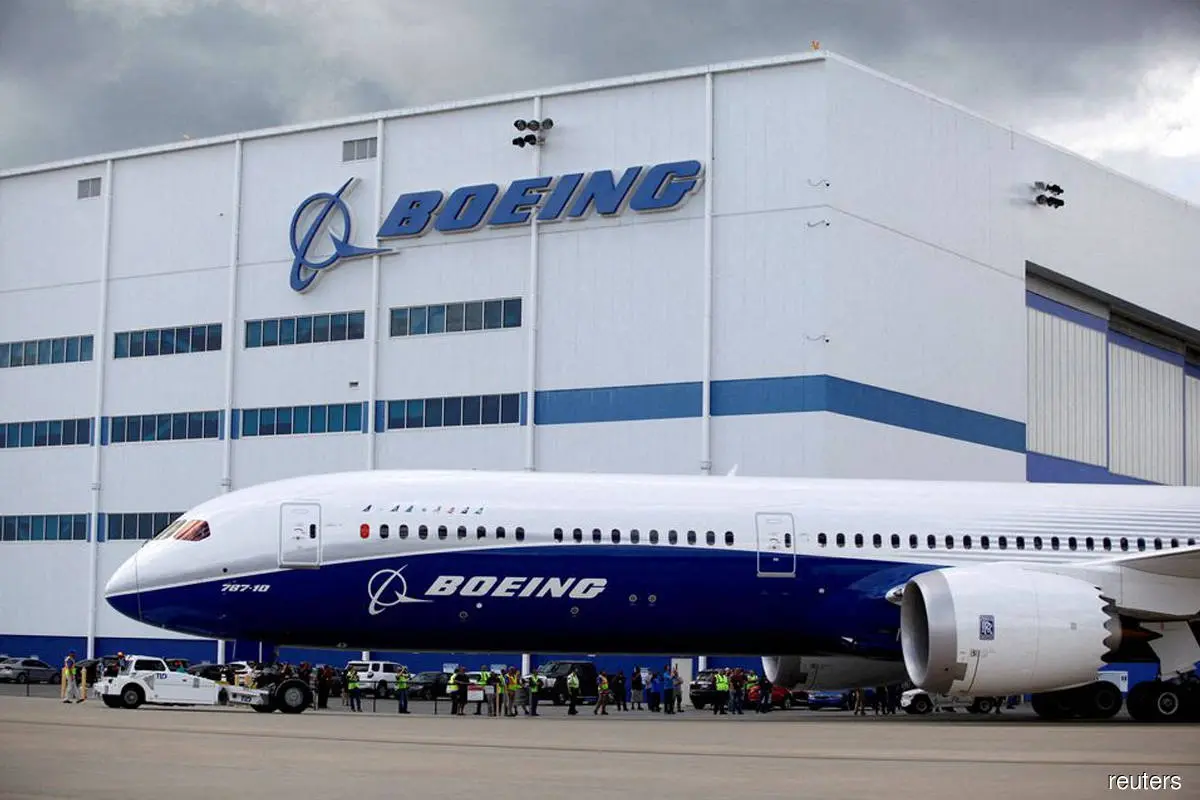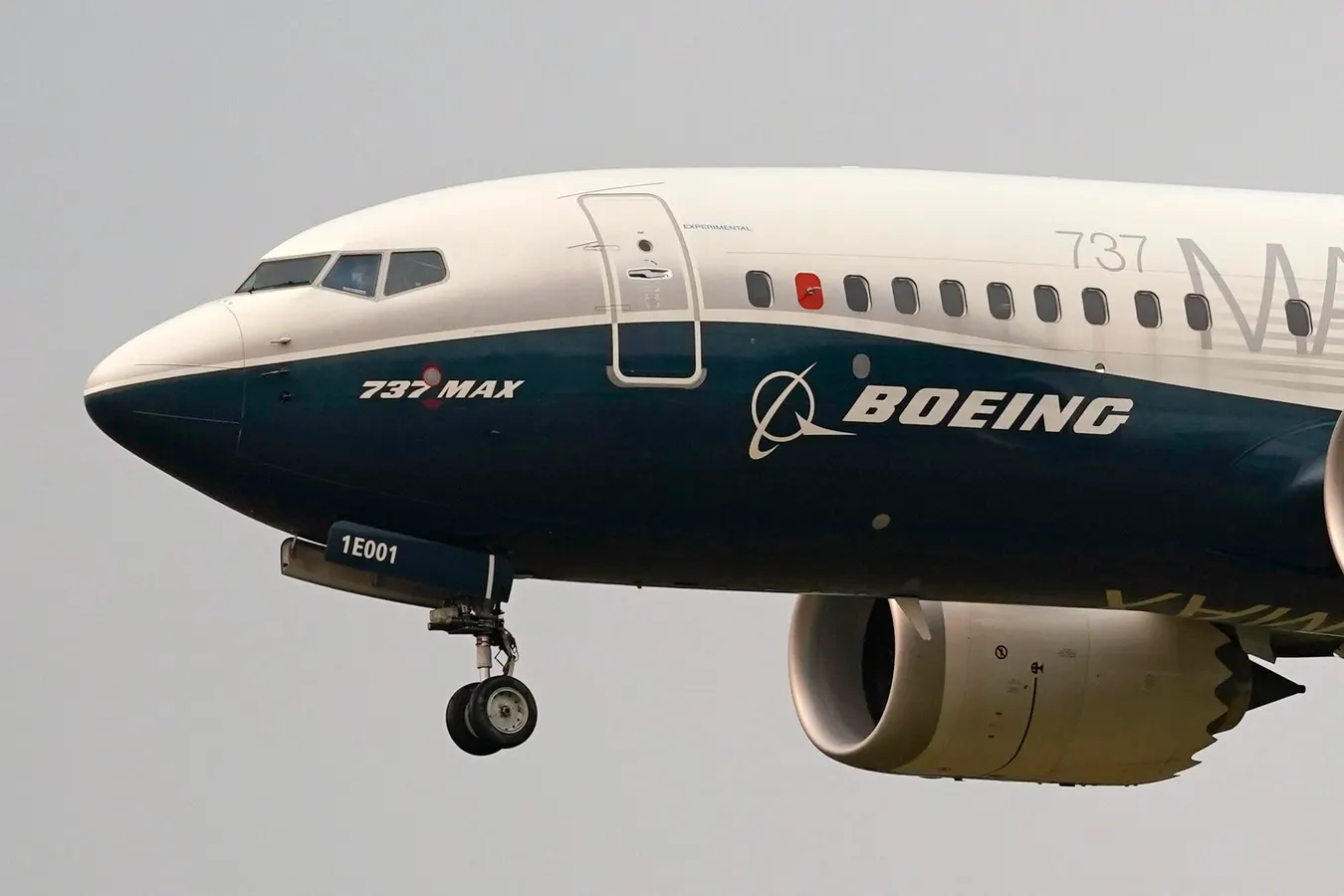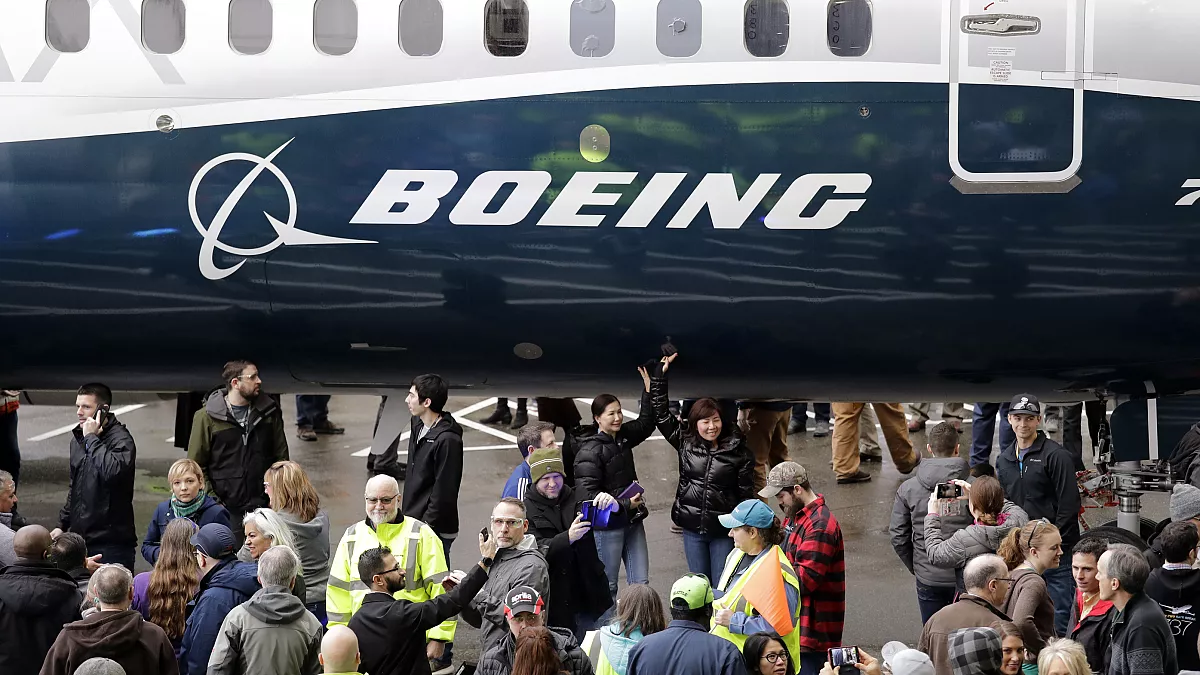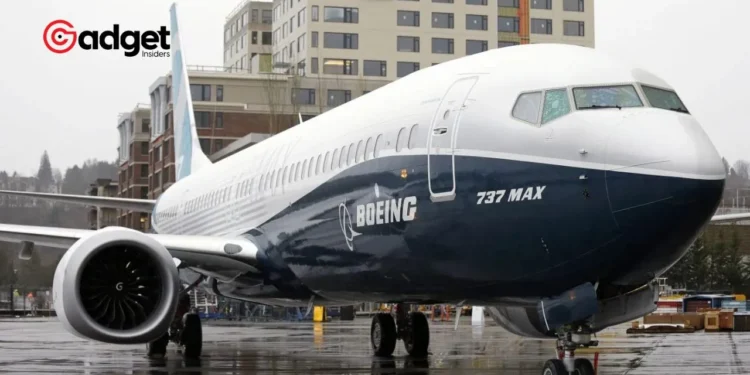In an event that has rattled the aviation industry to its core, a Boeing 737 MAX flight operated by Alaska Airlines became the center of an unprecedented FBI criminal investigation following a terrifying mid-air incident. This inquiry underscores the gravity of the situation and casts a shadow over Boeing’s troubled 737 MAX series, which safety concerns and scrutiny in recent years have beleaguered.

A Gaping Hole in the Sky: The Incident That Shocked Passengers
It was a routine flight that turned into a nightmare for the 171 passengers aboard Alaska Airlines Flight 1282. As the aircraft ascended through the skies, passengers were met with an alarming and unexpected event: a door panel blowout at 16,000 feet, leaving a gaping hole in the fuselage.
This harrowing experience, captured in a photo released by the National Transportation Safety Board (NTSB), has since become a symbol of potential peril in the skies.
FBI Steps In A Criminal Probe Unveiled
The severity of the incident prompted an immediate response from the Federal Bureau of Investigation (FBI). In a move that underscores the potential criminal implications of the mishap, the FBI’s Seattle bureau formally initiated a criminal investigation into the January 5 incident.
Passengers were informed through a letter, advising them to register with the department’s Victim Notification System, hinting at the unforeseen depth of legal implications and the agency’s commitment to thoroughness in its probe.

A Call for Justice: Passengers and Legal Action
The situation took a more complex turn as passengers, now potentially considered victims of a crime, were encouraged to come forward and stay informed through the FBI’s efforts.
Mark Lindquist, an attorney representing some of the affected passengers, remarked on the significance of the FBI’s investigation, noting it as “encouraging” and a validation of the passengers’ grievances and concerns over the incident. This acknowledgment has added a layer of legitimacy to the forthcoming legal battles against Boeing and Alaska Airlines.
The Fallout: Boeing and Alaska Airlines Under Scrutiny
As the investigation unfolds, the spotlight has turned to Boeing and Alaska Airlines, with both entities facing intense scrutiny over their roles and responsibilities.
The revelation that four bolts intended to secure the door plug were missing upon departure from Boeing’s assembly plant has raised alarms about the manufacturing and quality control processes of the aviation giant.
In response to the incident and the ensuing investigation, Alaska Airlines has pledged its full cooperation, while Boeing has remained tight-lipped, declining to comment on the matter.
The FBI has told passengers on the Alaska Airlines Boeing 737 Max that lost a door-plug panel in midflight that they might be victims of a crime.https://t.co/Gr95oNK1DL
— NBC New York (@NBCNewYork) March 23, 2024
A Pattern of Concern: Boeing’s Troubled History
This incident has reignited concerns over the safety and oversight of Boeing’s 737 MAX series. Following the discovery of the missing bolts and the mid-air scare, federal investigators and the Federal Aviation Administration (FAA) have identified numerous issues within Boeing’s production process, including unconventional methods used by mechanics to test compliance.
This scrutiny comes in the wake of Boeing’s failed audits and alleged noncompliance issues, further complicating the company’s efforts to rehabilitate its reputation after the tragic 737 MAX crashes in 2018 and 2019.
The Legal Horizon: A DOJ Investigation Looms
The drama extends beyond the FBI’s criminal probe as the U.S. Department of Justice (DOJ) has launched its investigation into whether Boeing complied with a $2.5 billion settlement related to its 737 MAX planes.
With a grand jury convened and witnesses being interviewed, the legal challenges facing Boeing are mounting, painting a grim picture of potential systemic failures within the company.

Boeing: A Turbulent Time for Aviation Safety
The Boeing 737 MAX door incident serves as a stark reminder of the complexities and dangers inherent in aviation. As the FBI and DOJ investigations progress, the aviation community and the public await answers and accountability.
This incident not only highlights the critical importance of stringent safety measures and quality control but also raises questions about the integrity of aviation manufacturing practices. As we navigate through these turbulent times, the safety of passengers remains the paramount concern, underscoring the need for unwavering vigilance and rigorous oversight in the skies.










